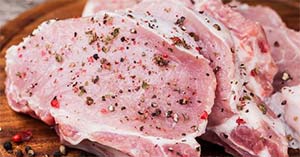Pork Quarterly Q2 Report Forecasts More Clouds Hovering Over Unpredictable Global Marketplace
Uncertainty in global markets – primarily due to disease risk, trade disputes, and feed availability – will create opportunities and challenges for the pork industry in the coming months. That’s the takeaway from the Pork Quarterly Q2 2018 report issued by Rabobank’s RaboResearch unit.
In particular, it points out, impacts of what could be a looming trade war between the United States and China could distort markets and weigh on pork values in North America, while creating some potential upside for producers in Asia, Europe, and South America.
 “The potential escalation of the China-US trade dispute – along with ongoing NAFTA modernization talks – creates a heightened sense of risk,” said Christine McCracken, senior analyst – animal protein at Utrecht, Netherlands-headquartered Rabobank. “Disease is also part of this uncertainty, including the threat of African swine fever (ASF) spreading in Europe. With so many threats, agility will be a key asset for pork producers in a volatile operating environment.”
“The potential escalation of the China-US trade dispute – along with ongoing NAFTA modernization talks – creates a heightened sense of risk,” said Christine McCracken, senior analyst – animal protein at Utrecht, Netherlands-headquartered Rabobank. “Disease is also part of this uncertainty, including the threat of African swine fever (ASF) spreading in Europe. With so many threats, agility will be a key asset for pork producers in a volatile operating environment.”
In China steep hog price declines (-30% year to date) are pressuring margins, as the market remains oversupplied. Announced tariffs on US pork help to stabilize markets near-term, but are unlikely to fully offset market pressures. Potential tariffs on US soybeans add further cost pressure. Losses are expected to continue, but gradually improve as the industry right-sizes production. Demand for pork will remain good, helped by low costs.
In the United States follow-through on planned growth in 2018 is resulting in seasonal production records. At the same time delays in the ramp-up of new capacity and trade disruption are softening demand. Little immediate change is seen in production plans, as the industry has built a financial war chest to withstand the current downturn. With NAFTA renegotiations underway and the trade war with China heating up, plans to add production may be reconsidered until there is improved visibility.
Price Pressure in EU
Production growth and weaker exports are expected to limit the upside in margins for European producers in 2018. Gradual growth in pig herds reflects good returns over the past year and a rebound in productivity. The EU is not expected to see a big pick-up in demand from China, but should benefit from increased sales to Japan and South Korea. The threat of ASF (and the risk to exports in that eventuality) remains an overhang on the market.
Brazil Offsets Main Market Loss
A surge in exports to China and Hong Kong is helping offset lost access to Brazil’s primary export market in Russia. Even so, producers continue to struggle with weak pork prices and higher feed costs following a moderately disappointing growing season. Based on current profit levels, Rabobank analysts expect slower growth in production in the year ahead.





